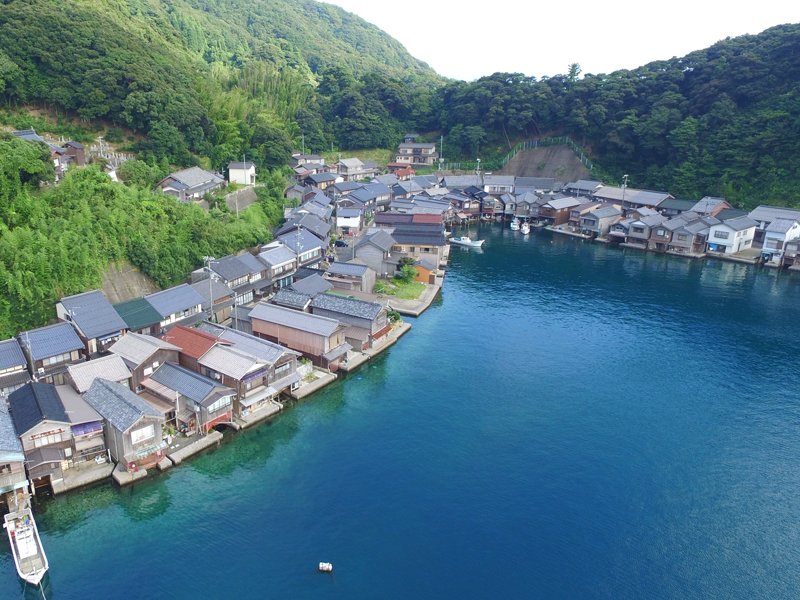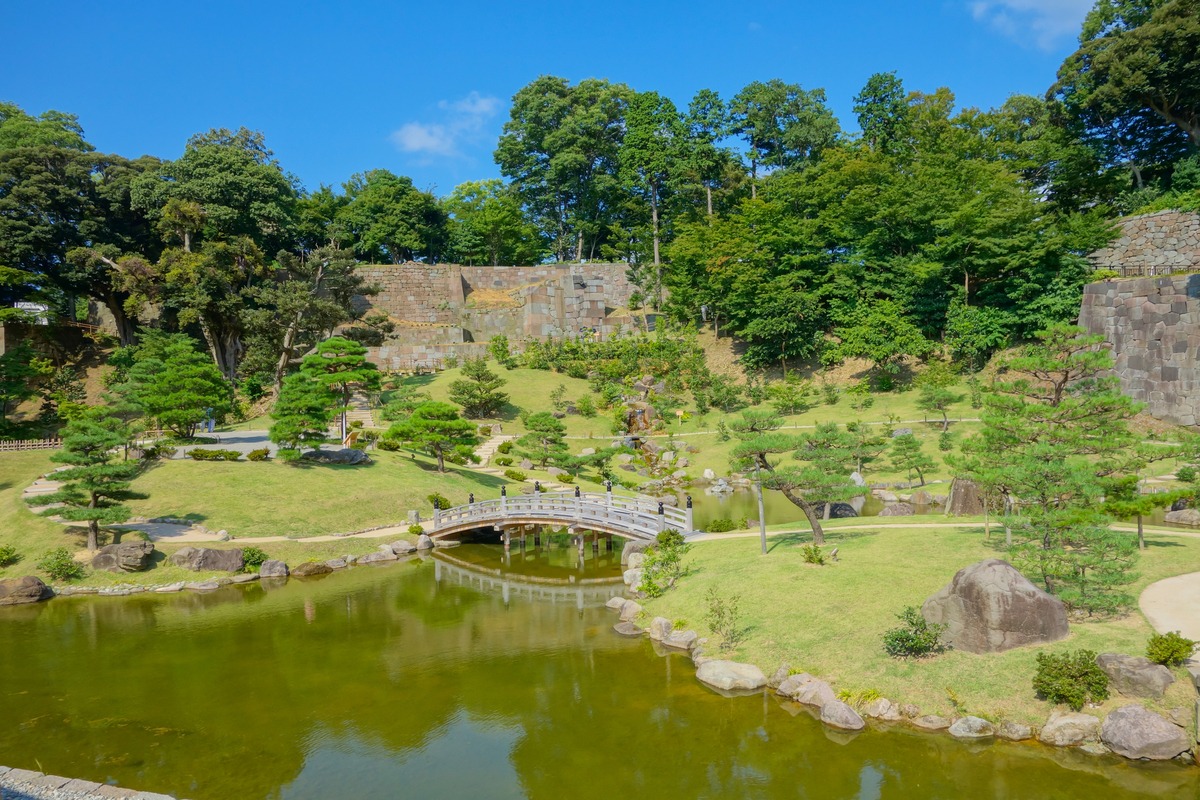13 Days 12 Nights Honshu Tour Reference Itinerary
Day 1 Kansai airport→Osaka→Shinsaibashi
Shinsaibashi Shinsaibashi: Known as a shopping district, Shinsaibashi is lined with many brand-name stores and restaurants. The Shinsaibashisuji shopping arcade in particular is a continuous arcade where visitors can enjoy shopping and eating.
Dotonbori: Dotonbori is one of Osaka’s most popular tourist attractions, with its neon-lit billboards and specialty foods. The Glico sign and the giant crab sign of Kani Doraku are especially famous and popular photo spots. Osaka’s food culture, including takoyaki and okonomiyaki, can be enjoyed in this area. Together, both areas offer visitors a chance to experience the vibrant Osaka atmosphere.



Day 2 Osaka Castle→Kobe→China town→Osaka
Osaka Castle: This historical castle in Osaka City was built by Toyotomi Hideyoshi at the end of the 16th century. The beautiful keep was rebuilt, and the interior is open to the public as a museum. The surrounding park is filled with cherry trees, making it a magnificent cherry blossom viewing spot in spring. Osaka Castle is also the site of many historical events and festivals that attract many tourists. It is a symbolic sightseeing spot in Osaka that combines history and nature.
Kobe: Kobe is a beautiful port city located in Hyogo Prefecture, with an exotic atmosphere. Around the port of Kobe are Harborland and Meriken Park, where you can take a stroll while enjoying the view of the sea. In addition, the Kitano Ijinkan-gai, lined with historical Western-style buildings, offers visitors a sense of exotic culture. Kobe is also rich in delicious food such as Kobe beef and Nankinmachi in Chinatown.
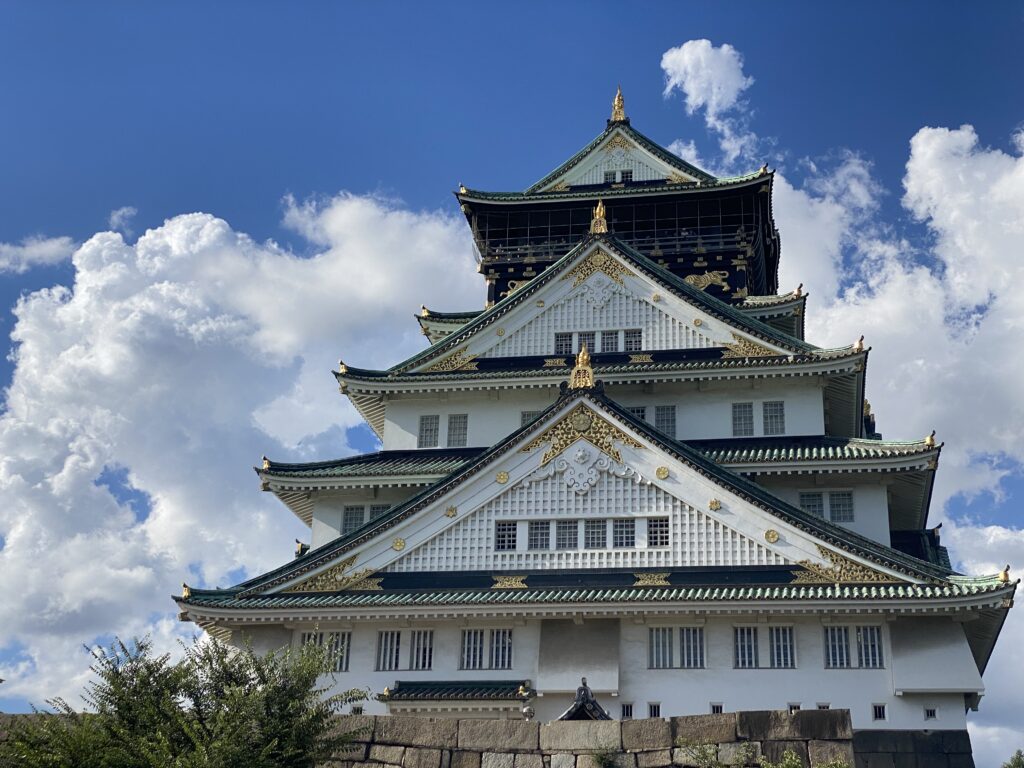


Day 3 Osaka→Nara park→Todaiji Temple→Kyoto
Nara Park: Nara Park is a vast park in Nara City, dotted with important cultural properties with a history of approximately 1,300 years. The park is rich in cultural attractions, with such landmarks as Todaiji Temple, Kofukuji Temple, and Kasuga Taisha Shrine. The park is also home to many deer that roam freely, much to the delight of visitors. The area is rich in nature, making it an ideal place for walks and picnics. It is an iconic spot in Nara where visitors can also enjoy the scenery of the four seasons.
Todaiji Temple: Todaiji Temple is a historic Buddhist temple built in the 8th century during the Nara Period in what is now the city of Nara. Daibutsu: At the center of Todaiji is Japan’s largest bronze statue of the Great Buddha, widely known as the “Great Buddha of Nara. Widely known as the “Great Buddha of Nara,” it stands approximately 15 meters tall. The Daibutsuden (Great Buddha Hall) is located on the grounds of Todaiji Temple and welcomes visitors with an overwhelming presence.



Day 4 Arashiyama→Kinkakuji Temple→Kiyomizu Temple
Kinkakuji (Rokuonji): This prominent Zen temple in Kyoto City is especially noted for its beautiful golden buildings. The building consists of two and three tiers covered with gold leaf, and together with the surrounding pond and garden, it offers a seasonal view. Kinkakuji was built in the 14th century and has been rebuilt several times since then, but the current building was restored in 1955. For tourists, this is a spot where they can experience history and beauty in a quiet atmosphere.
Kiyomizu Temple: This famous temple is located in Kyoto City and is registered as a World Heritage site. The view from the stage is especially beautiful and attracts many tourists during the cherry blossom season in spring and the autumn foliage season in fall. The temple’s main hall, with its large wooden stage, is the perfect place to enjoy the view. Kiyomizu Temple is also home to “Otowa Falls,” which attracts many visitors for its clear water. This is an iconic spot in Kyoto where visitors can enjoy historical architecture and abundant nature.
Fushimi Inari Taisha Shrine: The oldest Inari shrine in Japan, located in Kyoto City, is especially known for its 1,000 torii gates. The approach to the shrine, lined with red torii gates, is extremely beautiful and offers different views as you climb the mountain. The shrine attracts many visitors as a place to pray for prosperous business and a good harvest. There are many small shrines within the precincts of the shrine, and a sacred atmosphere can be felt at each location. It is a popular tourist spot with easy access and seasonal scenery.

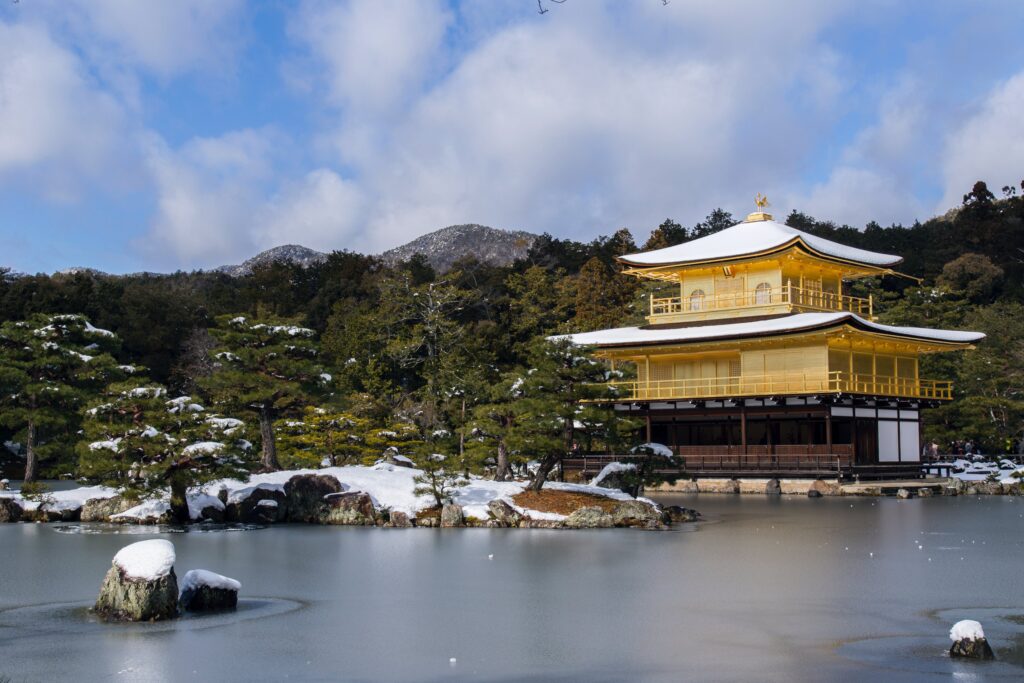


Day 5 Kyoto→Amanohashidate→Ine Funaya
Amanohashidate: Located in Miyazu City, Kyoto Prefecture, this beautiful scenic spot is one of the three most scenic spots in Japan. The 3.6-kilometer-long spit of sand is covered with pine trees, and when viewed from the other side of the river, visitors can enjoy the beautiful view, also known as “the bridge of heaven. The view from the observatory is especially popular, and on a clear day, the scenery is spectacular. There are also many hot springs and sightseeing spots in the surrounding area, where visitors can enjoy nature and history. The scenery in each of the four seasons makes this an attractive tourist destination.
Ine Funaya: A traditional fishing village landscape in Ine Town, Kyoto Prefecture, these houses have a unique architectural style facing the sea. These boathouses have the first floor as boat hangars and the living space on the second floor. Combined with the beautiful seascape, it is a popular historical and cultural heritage site.



Day 6 Higashi Chaya Street→Kenrokuen Garden
Higashi Chaya-gai Higashi Chaya-gai is a historical teahouse district in Kanazawa City, Ishikawa Prefecture, with a charming atmosphere that dates back to the Edo period. Traditional townhouses stand side by side, dotted with teahouses and souvenir stores. Visitors can enjoy the emotional atmosphere of the culture and customs of the time. In particular, there are many teahouses where you can taste matcha green tea and Japanese sweets, which are popular among tourists. At night, lanterns are lit, creating a fantastic atmosphere.
Kenrokuen Garden: One of Japan’s most famous gardens in Kanazawa City, Ishikawa Prefecture, and designated as a Special Place of Scenic Beauty by the national government, this 17th century garden is characterized by its beautiful seasonal scenery. The vast site is decorated with ponds, waterfalls, stone bridges, pine trees, and other features, creating a wonderful harmony between nature and man-made elements. The garden attracts many tourists, especially during the cherry blossom and autumn foliage seasons. In addition, Kenrokuen Garden is based on the theme of “six beauties,” offering elegance, tranquility, grandeur, ruggedness, convenience, and atmospheric scenery.
Omimachi Market : A lively market in Kanazawa City, Ishikawa Prefecture, where visitors can enjoy fresh seafood and local specialties. founded in 1860, the market is now lined with many stores and is loved by tourists and locals alike. The market offers a wide variety of fresh seafood, vegetables, fruits, Kaga vegetables, and Japanese sweets, making it a great place to eat and look for souvenirs. There are also many eateries in the market, where the local cuisine is especially popular. The lively atmosphere and delicious ingredients make this a very attractive spot.



Day 7 Kanazawa→Shirakawa-go→Takayama
Shirakawa-go: Located in the mountains of Gifu Prefecture, this Gassho-style village is a UNESCO World Heritage Site. It is characterized by traditional thatched-roof houses, and in winter, the beautiful scenery is covered with snow. The gassho-zukuri style houses are designed to withstand the weight of snow, and the unique local culture and natural environment are combined in this place. Visitors can tour the historic buildings and enjoy local specialties. The beautiful scenery in each of the four seasons is an attractive feature of this spot.
Hida Takayama: This is a beautiful tourist destination with old townscapes and traditional culture. Especially popular are the historical government office called “Takayama Jinya” and “Sanmachi Street” where visitors can enjoy the old townscape. Hida beef, a local specialty, and handmade crafts are also worth seeing. In addition, the Takayama Festival in spring and the Autumn Festival attract many tourists with their gorgeous floats. The seasonal nature and the elegant townscape make this an attractive spot.
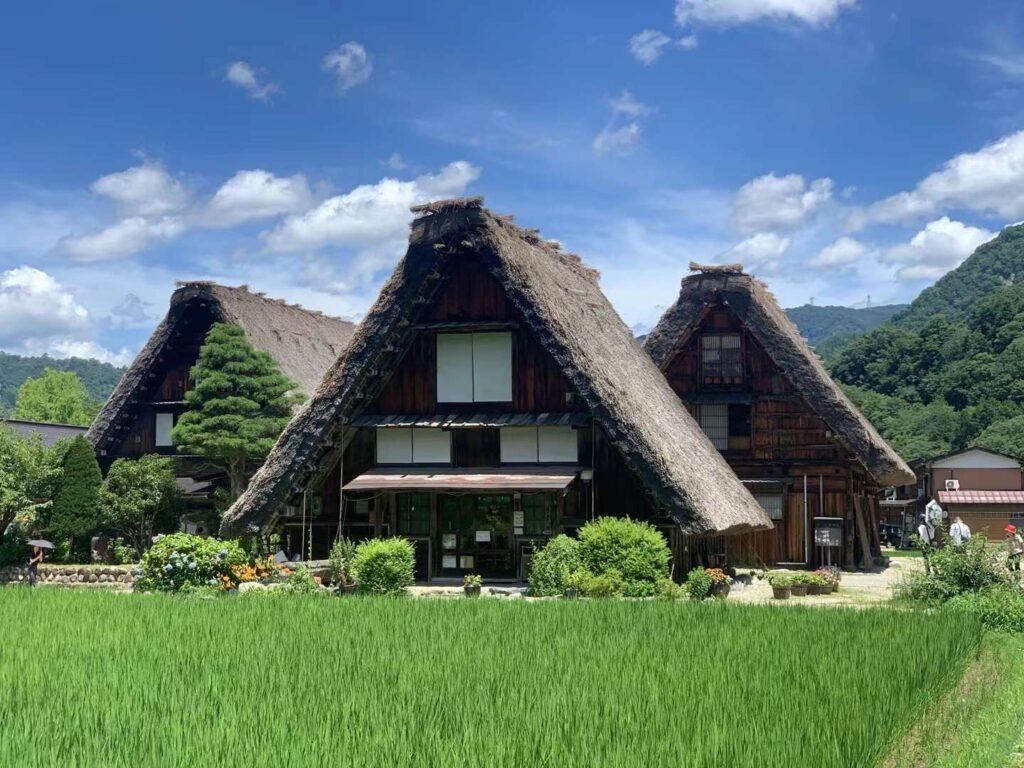


Day 8 Takayama→Nagano
Matsumoto: Located in Nagano Prefecture, this beautiful castle town is especially famous for Matsumoto Castle. Matsumoto Castle is designated as a national treasure and its black exterior walls are impressive. Surrounded by historical buildings, museums, and hot springs, the area is rich in cultural attractions. It is also a place where one can enjoy nature in all four seasons, especially the greenery in summer and the autumn leaves in fall. It is also a popular spot for tourists, as they can enjoy food made with local ingredients and Shinshu soba noodles.


Day 9 Nagano→Mt.Fuji Area→Kawakuchiko
The fifth station of Mt.Fuji : Fuji is a sightseeing spot located halfway up the mountain at an elevation of approximately 2,300 meters. Fuji. It offers beautiful views and is also known as the starting point for mountain climbing. Facilities are well equipped, with restaurants and souvenir shops. During the summer season, the area attracts many tourists and climbers, who can enjoy the spectacular views of the surrounding area, especially on clear days.
Kawaguchi Lake: This beautiful lake is located in Yamanashi Prefecture and stretches to the north of Mt. It is a popular tourist destination with abundant natural scenery around it, and visitors can enjoy the scenery of the four seasons. The cherry blossoms in spring and autumn leaves in fall are especially beautiful and attract many tourists. Boating, canoeing, fishing, and other activities can be enjoyed on the lake, and there are also a variety of hot spring facilities and lodging facilities along the lake. It is a place where visitors can enjoy a variety of activities against the backdrop of the spectacular view of Mt.
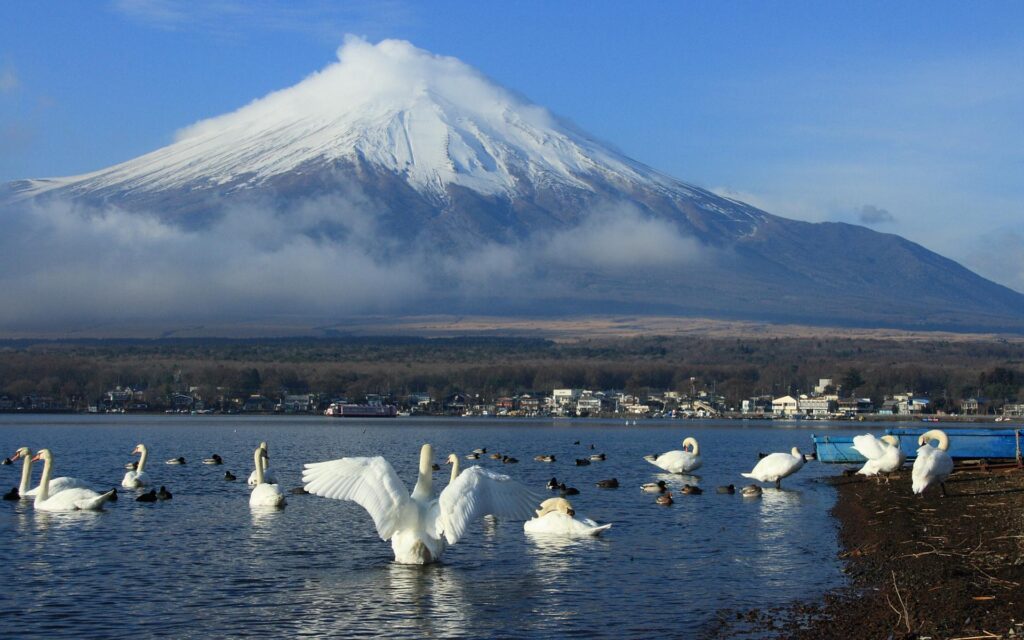

Day 10 Oshino-Hakkai→Hakone→Lake Ashi→Owakudani
Oshino Hakkai: A group of beautiful spring ponds in Oshino Village, Yamanashi Prefecture, fed by melted snow from Mt. It consists of eight ponds and is characterized by its crystal clear water and surrounding nature. In particular, the ponds’ water is very clear and is popular among tourists who visit for fishing and photography. The surrounding area is also dotted with tasteful traditional buildings and stores where visitors can enjoy local specialties. It is a sightseeing spot rich in nature where visitors can enjoy the scenery of each of the four seasons.
Lake Ashi: Located in Hakone Town, Kanagawa Prefecture, this beautiful lake was formed by the volcanic activity of Mt.Fuji.The lake is surrounded by abundant nature and is especially known as a spot where visitors can enjoy a spectacular view of Mt. The lake offers activities such as sightseeing boats, canoeing, and fishing, as well as hot spring facilities and tourist attractions scattered along the lakeshore. It is a popular tourist destination where visitors can enjoy beautiful scenery from season to season.
Owakudani: This area is the crater of an active volcano in Hakone Town, Kanagawa Prefecture, where abundant hot springs and volcanic fumes rise from the crater. Here, visitors can enjoy hot spring eggs (black eggs) and geothermal dishes amid the aroma of sulfur. From Owakudani, visitors can also enjoy beautiful views of Mount Fuji and the surrounding mountains, making it a popular spot for tourists. Fuji and the surrounding mountains. A well-maintained promenade allows visitors to feel the power of the volcano as they stroll through the natural surroundings.



Day 11 Hakone→Tokyo






Day 12 Tokyo city tour (Customize)
The city of Tokyo is an attractive city with a diverse range of tourist attractions.
- Asakusa: Many historical buildings such as Kaminarimon and Senso-ji Temple offer a traditional atmosphere. Eating and walking along Nakamise-dori is also popular.
- Shibuya: With the world-famous Shibuya Crossing and the Hachiko statue, this is a town for young people to enjoy shopping and dining.
- Shinjuku: With its skyscrapers and Shinjuku Gyoen, the area offers night views and parks. Kabukicho is another lively spot.
- Harajuku: An area of unique fashion and culture, Takeshita-dori and Omotesando are particularly popular.
- Ueno: Ueno Onshi Park has a zoo, art galleries, and museums where visitors can enjoy culture and nature.
- Tokyo Tower and Tokyo Skytree: Both observation decks offer spectacular views of the entire Tokyo area.
Day 13 JAPAN🛫HOME
Honshu Tour High-Light
All itineraries can be arranged according to your preferences.
There is a minimum number of participants for the trip.
Some services may not be available in small groups and may be more expensive.
Include
BUS
HIGHWAY
PARKING
GUIDE
ADMISSION
HOTEL ( 3 STAR OR 4 STAR)
MEAL
Not Inculde
Service charge
Temporary change expense of the itinerary
Personal expense
International fight
Personal travel insurance
The meal which is not included in an itinerary







